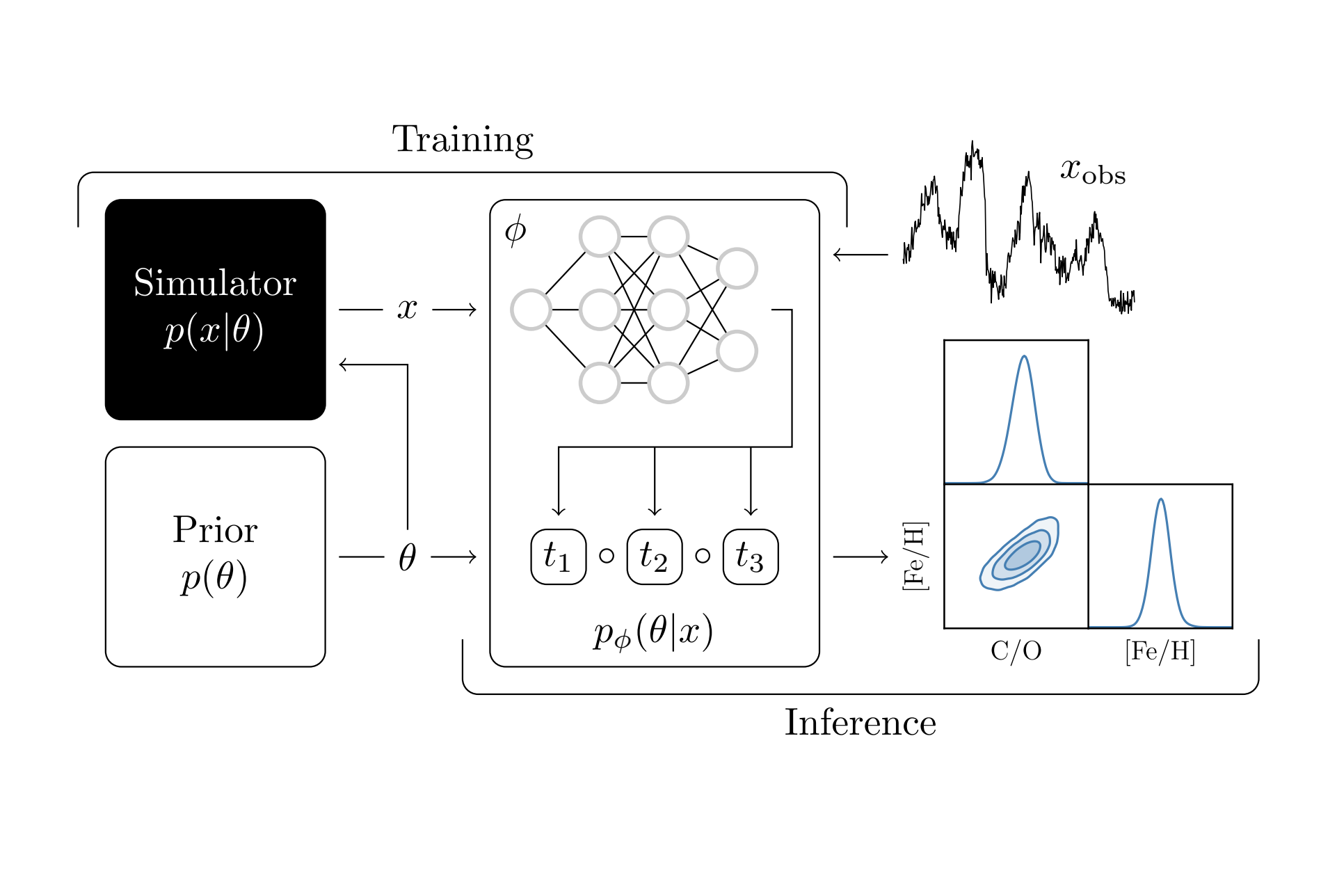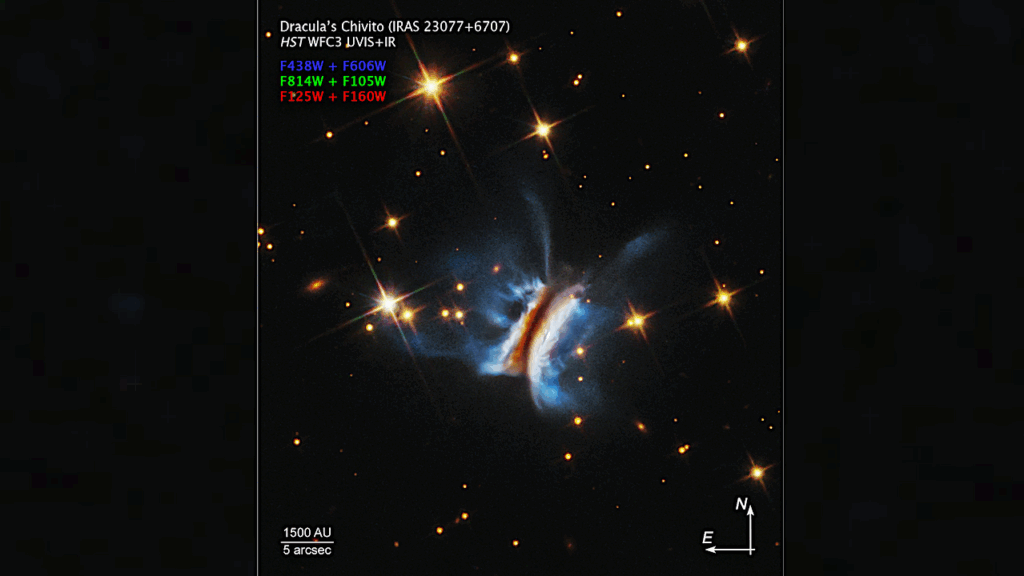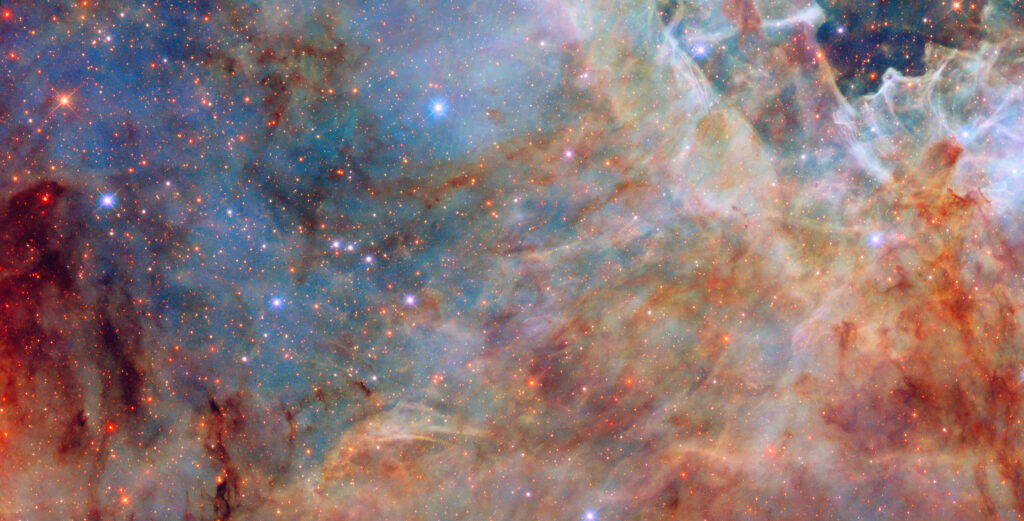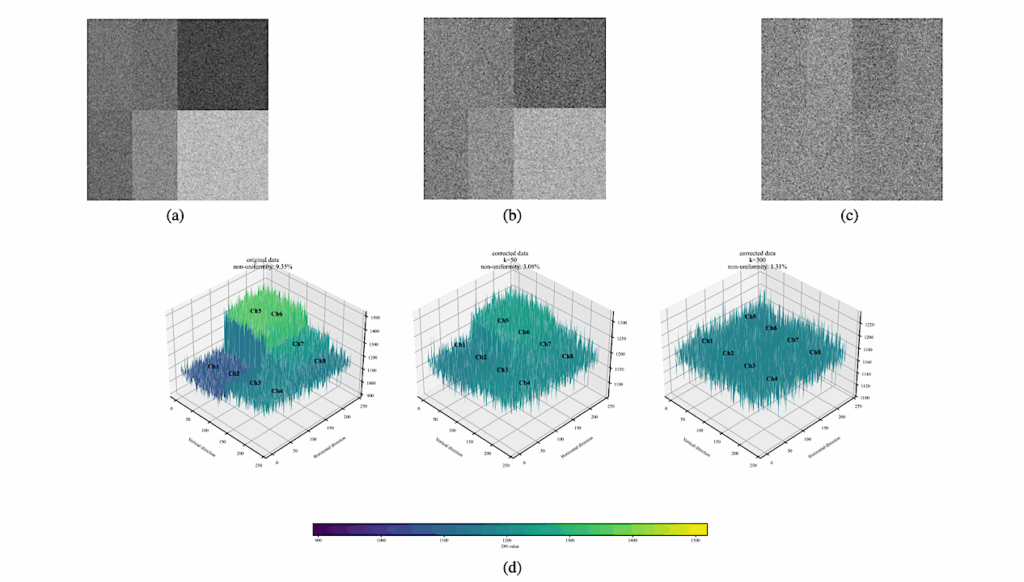Neural Posterior Estimation For Exoplanetary Atmospheric Retrieval

Retrieving the physical parameters from spectroscopic observations of exoplanets is key to understanding their atmospheric properties.
Exoplanetary atmospheric retrievals are usually based on approximate Bayesian inference and rely on sampling-based approaches to compute parameter posterior distributions. Accurate or repeated retrievals, however, can result in very long computation times due to the sequential nature of sampling-based algorithms.
We aim to amortize exoplanetary atmospheric retrieval using neural posterior estimation (NPE), a simulation-based inference algorithm based on variational inference and normalizing flows. In this way, we aim (i) to strongly reduce inference time, (ii) to scale inference to complex simulation models with many nuisance parameters or intractable likelihood functions, and (iii) to enable the statistical validation of the inference results.
We evaluate NPE on a radiative transfer model for exoplanet spectra petitRADTRANS, including the effects of scattering and clouds. We train a neural autoregressive flow to quickly estimate posteriors and compare against retrievals computed with MultiNest. NPE produces accurate posterior approximations while reducing inference time down to a few seconds.
We demonstrate the computational faithfulness of our posterior approximations using inference diagnostics including posterior predictive checks and coverage, taking advantage of the quasi-instantaneous inference time of NPE. Our analysis confirms the reliability of the approximate posteriors produced by NPE. The accuracy and reliability of the inference results produced by NPE establishes it as a promising approach for atmospheric retrievals.
Amortization of the posterior inference makes repeated inference on several observations computationally inexpensive since it does not require on-the-fly simulations, making the retrieval efficient, scalable, and testable.
Malavika Vasist, François Rozet, Olivier Absil, Paul Mollière, Evert Nasedkin, Gilles Louppe
Subjects: Earth and Planetary Astrophysics (astro-ph.EP); Instrumentation and Methods for Astrophysics (astro-ph.IM)
Cite as: arXiv:2301.06575 [astro-ph.EP] (or arXiv:2301.06575v1 [astro-ph.EP] for this version)
Submission history
From: Malavika Vasist
[v1] Mon, 16 Jan 2023 19:18:31 UTC (1,965 KB)
https://arxiv.org/abs/2301.06575
Astrobiology








